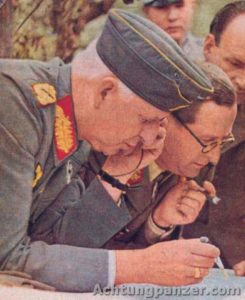 Wired recently published this article entitled ” How Special Ops Copied al-Qaida to Kill it”. It outlines the work of General Stanley McChrystal and his efforts to defeat a Al Quaida, based on the realization that, “to defeat a networked enemy we had to become a network ourselves.” The general set up a highly efficient network to hunt and kill Al-Qaida and Taliban operatives:
Wired recently published this article entitled ” How Special Ops Copied al-Qaida to Kill it”. It outlines the work of General Stanley McChrystal and his efforts to defeat a Al Quaida, based on the realization that, “to defeat a networked enemy we had to become a network ourselves.” The general set up a highly efficient network to hunt and kill Al-Qaida and Taliban operatives:
McChrystal set to work, as he put it, building JSOC’s network. One key node: CIA. During a January speech, he recalled how he needed CIA’s help getting intelligence on a Taliban leader he was hunting. CIA was secretive, compartmentalized and suspicious of other organizations meddling in its affairs — exactly what JSOC used to be like. So McChrystal took the rare step of going to CIA headquarters, hat in hand. As it turned out, CIA just needed a promise that JSOC “wouldn’t go across the border” into Pakistan, jeopardizing its own operations. McChrystal agreed, the intel flowed, and the Taliban commander was killed. It was the beginning of a new relationship between JSOC and the vast spy apparatus the U.S. built after 9/11. CIA operatives and analysts would visit McChrystal’s base of operations in Balad, Iraq, to plan joint missions. And not just them: Satellite analysts from the National Geospatial-Intelligence Agency, regional experts from the State Department, and surveillance specialists from the National Security Agency were the next people McChrystal effectively recruited. McChrystal spent his commander’s discretionary fund not on better guns, but on purchasing bandwidth so that all the nodes of his network could speak to each other, sometimes during missions.
At the end of the article the author argues that:
The network McChrystal built, McRaven enhanced and Votel inherits comes in stark contrast to the rest of the U.S. security bureaucracy, which Priest and Arkin call “Top Secret America” and which remains disconnected, bloated and expensive. Priest and Arkin bluntly conclude that McChrystal turned JSOC around “by outright rejecting at least four of Top Secret America’s defining characteristics: its enormous size, its counterproductive duplication, its internal secrecy, and its old-fashioned, hierarchical structure.”
Despite a decade of warfare, new weapons, new tactics, and new doctrines, however, there has not been a brilliant revolution in the strategic or operational sphere. This is because the counterinsurgency campaigns in Iraq and Afghanistan are platoon leaders’ and company commanders’ wars. The role of a commanding general in the 21st century is much more that of an armed diplomat, mediator, and savvy bureaucrat, rather than of an operational leader or innovative strategist. Perseverance rather than dash are the prime virtues of an officer conducting a counterinsurgency campaign.
While individual combat leaders and platoon-to-company commanders gained valuable fighting experience in the last couple of years, this does not mean that this knowledge trickles up to the rear echelons of command. In U.S. military history of the last hundred years, few American generals fought overwhelming odds with low stocks of ammunition and supplies. There is indeed no equivalent in US military history since the US Civil War of generals (Patton might have been an exception) showing operational and innovative skills like Erich von Manstein during the German retreat on the Eastern Front; Chukhov’s brilliant encirclement and destruction of the German Army Group Center in 1944, paving the way for Russia’s victory in the East; or Stonewall Jackson’s Shenandoah campaign in the US Civil War in 1862.
The reason for that is that military brilliance and innovation can only manifest itself in a strategic environment, i.e. in a dialectic environment, where the reactions of the enemy fundamentally can alter the strategic outcome of a campaign. When the enemy is too weak to influence the ultimate outcome, no strategic discourse can take place. No matter what happened, Norman Schwarzkopf knew that the United States would prevail against the Iraqi Army; his only real job was to minimize casualties and deter Saddam Hussein from using weapons of mass destruction—no small task without a doubt. The outcome of the conventional wars in Iraq and Afghanistan also were never left in doubt; the United States and NATO would win by a landslide. In the current counterinsurgency campaigns in which the United States Armed Forces are involved, the insurgents do not have to influence the strategic level or alter the strategic outcome since the campaigns are fought on the squad, platoon, and company level. Tactical innovations like the Sunni rising in Iraq, for which General Petreus is held responsible, also do not qualify as influencing the strategic picture since the United States with or without the Sunni rising still strategically controlled Iraq, only now with proxies and fewer casualties. The same holds true for General McChrystal’s “lethal network”.